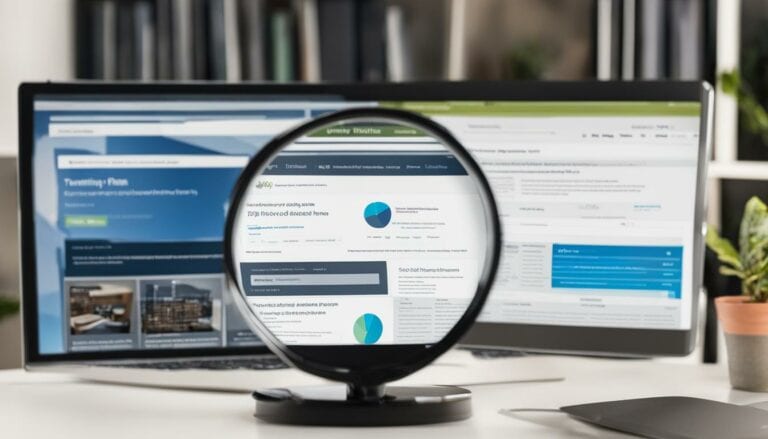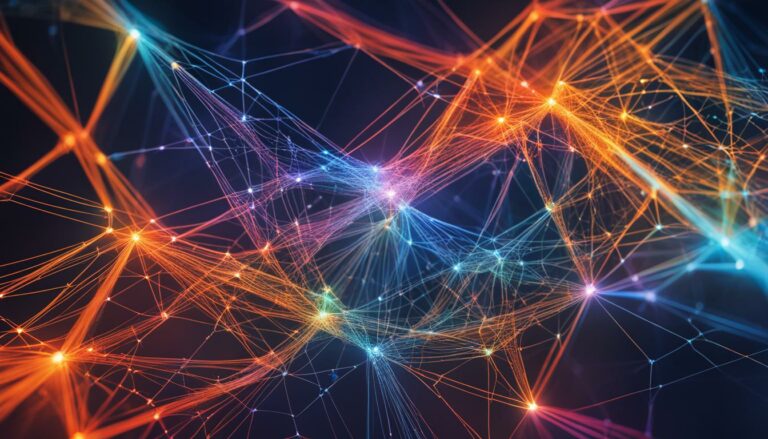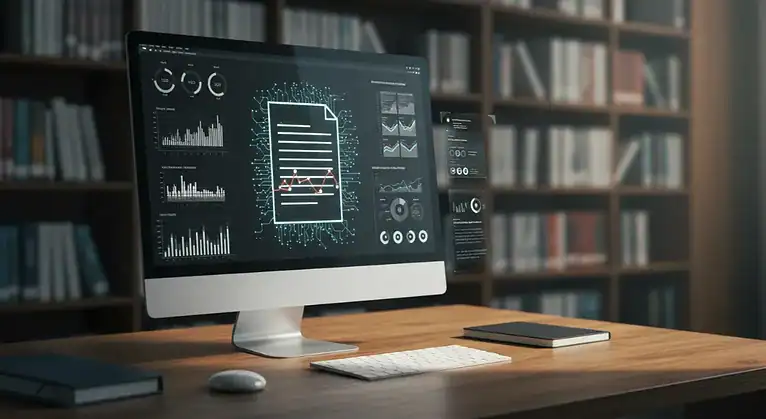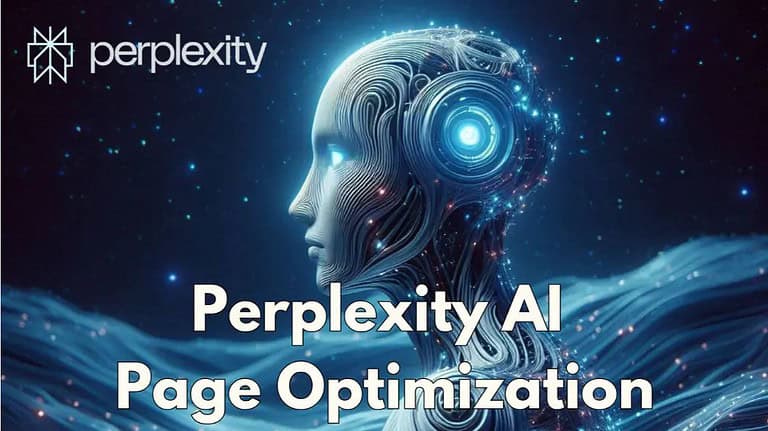Turnitin Plagiarism Detection in Images: 2025 Guide
In today’s digital age, visual content is increasingly prevalent in academic work. As a student or educator, you must understand the role of image analysis and text extraction in plagiarism detection and academic integrity.
Turnitin is a powerful tool with image reading capabilities. It is widely used to ensure content originality. This guide explores how Turnitin reads images, the types of image files it supports, and the importance of image analysis in maintaining academic integrity.
What Is Turnitin And Why Is It Used? 🤔
Turnitin is a widely recognized plagiarism detection software. It plays a crucial role in promoting academic integrity. This tool helps educators and institutions ensure content originality and authenticity in student work. By comparing submitted content against its extensive database, Turnitin generates a similarity index. This index highlights any potential instances of plagiarism.
Using plagiarism detection tools like Turnitin is vital in maintaining the integrity of academic work. It helps prevent academic misconduct. Educators can detect and address instances of plagiarism, thus upholding the academic standards of their institution.
What Is Turnitin’s Similarity Index? 📊

Turnitin’s similarity index shows the percentage of similarity between a submitted work and existing sources in its database. It measures the level of content matching. It also serves as an indicator of potential plagiarism.
| Similarity Index Range | Interpretation |
|---|---|
| 0% – 10% | Low similarity, indicating a high level of originality |
| 10% – 30% | Moderate similarity, suggesting the presence of properly cited external sources |
| 30% – 60% | Significant similarity, indicating the need for further investigation into potential plagiarism |
| Above 60% | High similarity, warranting immediate scrutiny for potential plagiarism |
The similarity index provided by Turnitin helps educators evaluate the originality and integrity of student work. This tool allows them to guide students towards better academic practices. It fosters a culture of respect for intellectual property and promotes content authenticity.
How Does Turnitin Read Images? 🖼️

Turnitin uses advanced image analysis techniques, including optical character recognition (OCR), to read and extract text from images. This technology helps the software accurately analyze visual content and detect textual information within images. It is used for plagiarism detection and content analysis.
OCR technology works by analyzing the visual elements of an image and converting them into editable text. When an image is submitted to Turnitin, the software applies OCR algorithms to identify and extract the text in the image. This extracted text is then compared against other sources in Turnitin’s database. This process helps detect similarities and potential instances of plagiarism.
Types Of Image Files Supported By Turnitin 📁

When it comes to submitting images to Turnitin for analysis, it’s important to know which types of image files are supported. Turnitin accepts a variety of image formats that are commonly used in digital media:
| Image File Type | Description |
|---|---|
| JPEG | Commonly used for photographs and images with complex color gradients. Supports high image quality. |
| PNG | Popular format for images with transparency. Ideal for graphics and logos. |
| Bitmap | Made up of individual pixels. Offers high detail and pixel-level editing. |
Turnitin supports these image file formats. This ensures students can submit their visual content in the most suitable format for analysis. This promotes a seamless integration of technology in education.
What Turnitin’s Image Analysis Detects 🕵️♀️

Turnitin’s image analysis can do more than just verify the presence of graphical content. It detects visual plagiarism, including art plagiarism. By analyzing images submitted, the software identifies similarities and potential instances of plagiarism in visual content.
Turnitin’s analysis not only detects text within images but also focuses on the visuals. This comprehensive approach helps identify cases where visual elements are copied without proper acknowledgment.
Understanding The Similarity Index For Image-Based Text 📈

When it comes to analyzing image-based text, Turnitin employs a similarity index to assess the originality and uniqueness of the content. The similarity index measures how closely the extracted text from images matches existing content within Turnitin’s extensive database.
The image text extraction process is a key component in calculating the similarity index. Turnitin’s advanced technology accurately extracts text from images using optical character recognition (OCR). This allows for a comprehensive analysis of the textual content, enabling the comparison and identification of similarities with other texts.
The similarity index is vital in determining the authenticity and originality of image-based texts. It enables educators and institutions to evaluate the level of potential content matching and ensure academic integrity.
Analyzing Image Submissions In Turnitin 🔍
When assessing image submissions in Turnitin, the platform verifies the text within images, conducts plagiarism checks, and ensures content authenticity. Turnitin’s technology thoroughly checks image submissions for potential plagiarism.
With Turnitin’s image analysis technology, educators can trust the accuracy and integrity of the assessment process. The platform’s ability to analyze image submissions is valuable in today’s digital landscape, where visual content is important in academic coursework and student work.
| Advantages | Limitations |
|---|---|
| Efficient text verification within images | Potential challenges with complex images or non-standard fonts |
| Comprehensive plagiarism detection for image-based submissions | Dependence on image quality and resolution for accurate analysis |
| Enhanced assessment of visual content authenticity | Limitations in detecting certain forms of visual plagiarism, such as heavily manipulated images |
Best Practices For Submitting Images To Turnitin ✅
When submitting images to Turnitin for analysis, there are several best practices to keep in mind:
- Choose The Correct File Format: Use widely supported formats such as JPEG, PNG, or bitmap to ensure optimal results.
- Consider Technical Capabilities: Ensure that the image meets the required resolution and size specifications to enhance the accuracy and reliability of the analysis.
- Ensure Visual Representation Accuracy: Make sure that the image is clear, well-defined, and properly represents the intended content to allow for precise extraction and analysis.
Understanding The Role Of Image Analysis In Academic Integrity 🎓
Image analysis is crucial in detecting and preventing plagiarism. It helps assess content originality. Turnitin’s technology analyzes image-based text and compares it to existing sources. The similarity index shows how much the content matches other materials.
The benefits of incorporating image analysis into plagiarism detection and academic assessment include:
- Comprehensive evaluation of both visual and textual content
- Improved clarity and accuracy in analyzing image-based text
- Enhanced promotion of originality and proper citation practices
The Future Of Turnitin And Image Analysis 🔮
As technology advances, Turnitin and image analysis have great potential to enhance educational and automated tools. Integrating image analysis into Turnitin’s broader educational platform can create a more holistic approach to content evaluation.
Refining automated tools and developing sophisticated algorithms can accurately detect plagiarism and analyze visual elements in real-time. This benefits both educators and students.
However, challenges remain. The accuracy and reliability of analyzing complex visual content need continuous improvement. Algorithms must handle various image formats and differentiate between legitimate use of visual content and instances of plagiarism or copyright violations.
Conclusion 🎉
Understanding image analysis and technology integration, such as Turnitin’s capabilities, is crucial for upholding academic integrity and ensuring content originality. As technology advances, educational institutions and individuals must stay informed about the latest developments. They should leverage tools like Turnitin to maintain academic integrity and ensure their work’s authenticity and originality.
FAQ ❓
- How Does Turnitin Read Images?
Turnitin uses OCR (optical character recognition) technology to extract text from images and analyze the content. - What Types Of Image Files Can Be Submitted To Turnitin?
Turnitin supports popular formats such as JPEG, PNG, and bitmap for image analysis. - What Does Turnitin’s Image Analysis Detect?
Turnitin’s image analysis detects graphical content, visual plagiarism, and potential instances of art plagiarism. - What Is The Similarity Index In Image-Based Text?
The similarity index is how Turnitin matches and compares extracted text from images to identify similarities and potential instances of content matching. - How Does Turnitin Analyze Image Submissions?
Turnitin verifies the text within images, conducts plagiarism checks, and ensures content authenticity to maintain academic integrity. - What Are The Advantages And Limitations Of Turnitin’s Image Reading Capabilities?
The advantages of Turnitin’s image reading capabilities include improved text clarity and academic evaluation. However, there may be limitations in detecting plagiarism accurately and ensuring precise analysis. - What Are The Best Practices For Submitting Images To Turnitin?
It is important to choose the correct file format, consider the technical capabilities of Turnitin’s image reading technology, and ensure the accuracy of the visual representation in the submitted images. - What Is The Role Of Image Analysis In Academic Integrity?
Image analysis plays a crucial role in detecting and preventing plagiarism, ensuring content originality, and promoting proper citation practices. - What Is The Future Of Turnitin And Image Analysis?
The future holds potential advancements in educational tools, automated analysis features, and the integration of image analysis into the broader Turnitin educational platform.
Source Links 🔗
I hope this guide has provided you with valuable insights into Turnitin’s image analysis capabilities and their significance in maintaining academic integrity. Remember, as technology evolves, it’s essential to stay informed and leverage these tools effectively to promote originality and authenticity in your academic work. Happy learning! 😄✨
I’m Alexios Papaioannou, an experienced affiliate marketer and content creator. With a decade of expertise, I excel in crafting engaging blog posts to boost your brand. My love for running fuels my creativity. Let’s create exceptional content together!







